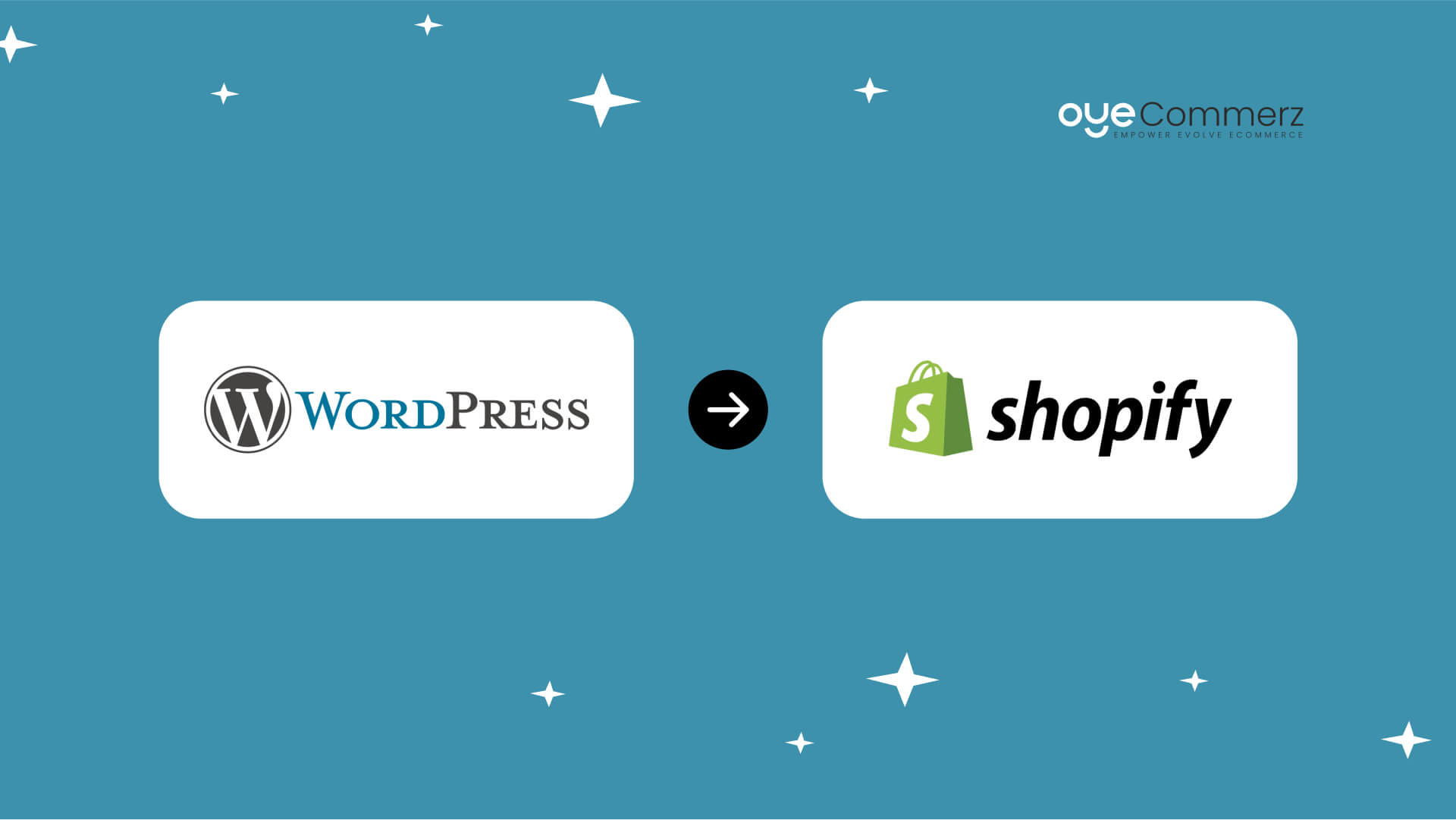An e-commerce platform's success is defined by its scalability, adaptability, and ability to offer seamless experiences to customers.
Considering a move from WordPress to Shopify? You’re probably seeking advanced features, better scalability, and a forward-thinking platform.
Follow this comprehensive roadmap to master the key strategies, insights, and steps for a smooth transition to Shopify.
Why Consider Moving from WordPress to Shopify?
While WordPress offers versatility, its reliance on multiple plugins often creates hurdles for scaling.
Shopify caters to businesses of all sizes with robust features, enterprise-grade security, and growth-focused solutions.
Shopify's reach extends to over 4.5 million stores globally in 2024, confirming its leadership in the e-commerce space.
Switching to Shopify can unlock benefits in payment integrations, mobile optimization, and order management.
Here’s your ultimate step-by-step guide to ensure a smooth transition.
Step 1: Understand Your Current E-Commerce Challenges
Begin with a detailed assessment of your store’s strengths, weaknesses, and goals.
Pinpoint challenges such as reliance on plugins or suboptimal page speed that restrict growth.
With tools like Shopify Payments and flexible themes, Shopify minimizes the need for external plugins.
Step 2: Create a Migration Plan
Migrating without a structured approach can lead to errors, data loss, or unexpected downtime.
Prepare for a seamless move by addressing essential aspects like inventory details, customer databases, and sales records.
Shopify provides tools and third-party apps to simplify the migration process and safeguard important information.
Step 3: Customize Your Shopify Store
Create a brand-consistent shopping experience using Shopify’s versatile customization tools.
Browse the Shopify Theme Store for templates or modify them to enhance user experience.
Themes such as “Impulse” or “Prestige” deliver visually stunning layouts and powerful features.
Shopify Plus offers tailored theme development for businesses seeking unique designs.
Oyecommerz specializes in crafting Shopify Plus themes that align with enterprise-level e-commerce needs.
Step 4: Preserve Your SEO Rankings
A successful migration includes retaining your existing SEO structure to avoid losing search engine rankings.
With Shopify, you can redirect outdated URLs and retain search visibility.
Customize meta tags and integrate Google Analytics to track performance post-migration.
Reports indicate that 70% of websites experience temporary traffic dips post-migration without proper SEO management.
Step 5: Boost Your Store with Key Shopify Apps
The Shopify App Store provides a wide range of applications to improve your store’s capabilities.
Apps like Klaviyo for email marketing and Yotpo for customer reviews can transform your customer engagement strategy.
Oyecommerz offers Shopify API services to integrate advanced tools and streamline processes.
Work with Oyecommerz for custom Shopify app integrations that optimize business workflows.
Step 6: Ensure Mobile-Friendliness
With mobile Seamless store migration with Shopify commerce dominating 60% of sales in 2024, mobile readiness is critical.
Every Shopify theme is built to adapt seamlessly to different screen sizes and devices.
Simplify the checkout process for mobile users with Shopify’s secure payment tools like Shop Pay.
Focus on streamlined navigation and speed to maximize mobile sales potential.
Step 7: Prepare Your Team for Shopify
While Shopify’s interface is user-friendly, training your team ensures a smoother transition.
Familiarize your employees with Shopify’s dashboard, product management, and reporting functions.
Well-trained staff can make the most of Shopify’s features, improving overall store efficiency.
Step 8: Conduct Thorough Pre-Launch Testing
Test your store rigorously to ensure all systems function smoothly before launching.
Verify that product information, inventory, and navigation links are error-free.
Simulate purchases to confirm your store’s payment methods and checkout flow are problem-free.
Testing ensures your store is customer-ready, leaving no room for errors on launch day.
Step 9: Launch with a Marketing Push
A successful migration is a great opportunity to engage and excite your audience.
Use email campaigns and social media to inform customers about the benefits of the new platform.
Emphasize improved speed, security, and shopping experience to encourage repeat visits.
Conclusion: Shopify – The Key to E-Commerce Growth
Migrating from WordPress to Shopify is more than a technical change—it’s a transformative step for your business.
From scalability to intuitive tools, Shopify equips your store to thrive in competitive Store migration guide markets.
Whether you’re a startup seeking simplicity or an enterprise requiring advanced capabilities, Shopify delivers.
Oyecommerz, a certified Shopify Plus partner, guarantees a seamless and effective transition.
Trust Oyecommerz to make your migration stress-free and maximize your store’s capabilities.
Ready to elevate your e-commerce strategy with Shopify? Let’s discuss your journey to success.
